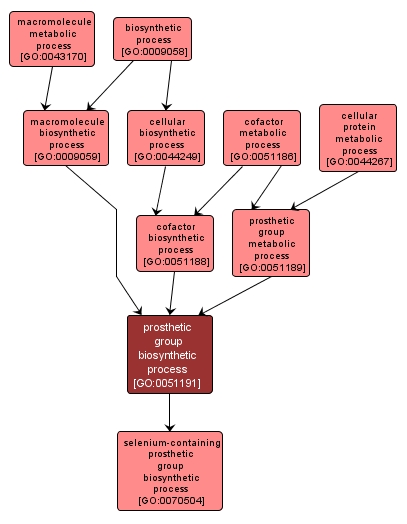GO TERM SUMMARY
|
| Name: |
prosthetic group biosynthetic process |
| Acc: |
GO:0051191 |
| Aspect: |
Biological Process |
| Desc: |
The chemical reactions and pathways resulting in the formation of a prosthetic group, the non-amino acid portion of certain protein molecules. Prosthetic groups may be inorganic or organic and are usually required for the biological activity of the protein. |
Synonyms:
- prosthetic group synthesis
- prosthetic group biosynthesis
- prosthetic group formation
- coenzyme and prosthetic group biosynthesis
- coenzyme and prosthetic group biosynthetic process
- prosthetic group anabolism
|














